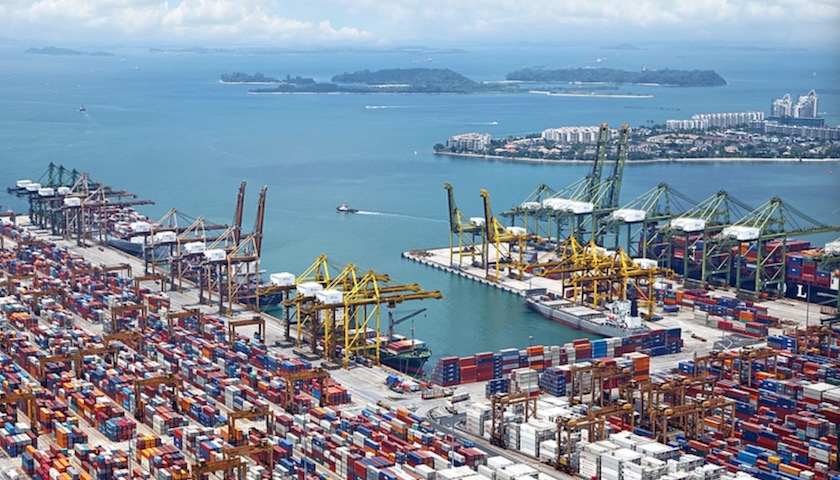Tariffs are imposed on goods and taxes are levied on imports.
According to the relevant provisions of the Customs Law and import and export tariffs, customs duties shall be levied on imported and exported goods unless otherwise provided for by the State. Customs duties are levied by the Customs in accordance with the Customs Import and export Tariff.
In addition to tariffs, value-added tax is also levied on imported goods, and consumption tax is levied on a few commodities. According to the provisions of national laws, the above two kinds of taxes shall be collected by the tax authorities. In order to simplify the collection procedures, facilitate the import and export of goods, and at the same time effectively avoid possible tax evasion caused by separate collection of goods after import, the state stipulates that value-added tax and consumption tax on imported goods shall be collected by the customs on behalf of the tax authorities in the import link. Therefore, in the actual work is often called customs collection.
The general procedures for the collection of customs taxes and fees are:
1. Tariff classification.
Tariff classification is to classify import and export goods into the appropriate tariff number in accordance with the general classification rules of the Customs Import and Export Tariff, so as to determine the appropriate tax rate.
2. The use of tax rates.
(1) Tariff rate.
In the Customs Import and Export Tariff, the import tariff has two columns: general tax rate and preferential tax rate, and there is only one export tax rate. According to the provisions of Article 6 of the Regulations on Import and Export Tariffs, imported goods originating from countries or regions with which the People's Republic of China has no reciprocal tariff agreement shall be taxed at the general rate, while imported goods originating from countries or regions with which the People's Republic of China has reciprocal tariff agreement shall be taxed at the preferential rate. Special tariffs may be levied on imported goods originating from countries or regions that impose discriminatory tariffs or other discriminatory treatment on Chinese exports.
[page] (2) The rate of proxy taxation.
At present, the customs collects taxes on behalf of other state departments in the import link, including value-added tax, consumption tax and ship tonnage tax.
3. Examination and approval of customs value.
Customs value refers to the price of import and export goods subject to customs duties calculated by the Customs in accordance with the relevant provisions of the Customs Law and the Regulations on Import and Export Duties.
The CIF price based on the transaction price approved by the customs shall be the customs value of the imported goods.
4. Calculation of taxes.
(1) Tariffs.
Import duty = customs value x tariff rate
Export tax rate = duty paid price x export tax rate
(2) Value-added tax.
Import VAT = (customs value + customs duty + consumption tax) x VAT rate.
(3) Import consumption tax.
AD valorem consumption tax = (customs value + duty)/(1- consumption tax rate) × consumption tax rate.
Specific consumption tax = quantity of taxable consumer goods x unit consumption tax.
The dutiable price is calculated up to Yuan and rounded up to yuan, and the tax amount is calculated up to minute and rounded up to minute.
The threshold for tax and fee is 10 yuan. Under RMB 10 is exempt.
5. Payment of taxes.
(1) Scope of taxpayers.
The consignee of import goods and the consignor of export goods are taxpayers of customs duties.
The units and individuals who sell goods or provide processing, repair and repair services and import goods within the territory of China are taxpayers of value-added tax.
Units and individuals that produce, process or import consumer goods prescribed in the Provisional Regulations of the People's Republic of China on Consumption Tax within the territory of China are taxpayers of consumption tax.
(2) Payment period.
For goods or ships that are subject to customs duties, value-added tax, consumption tax, regulatory fees, and tonnage tax after customs examination, taxpayers shall pay taxes and fees to designated banks within 7 days from the day after the Customs issues the certificate of payment of taxes and fees (except Sundays and statutory holidays).
Tax payment certificate in six copies, one to five copies by the customs stamped "People's Republic of China * * Customs special seal for documents", to the taxpayer to pay tax to the bank. The sixth copy (stub copy) shall be issued by the Customs for storage and check.
(3) Exchange rate.
If the import and export goods are transacted in foreign currencies, they shall be converted into RMB by the Customs according to the middle price of the Table of RMB Foreign Exchange Quotations published by the State Administration of Foreign Exchange on the date of issuance of the tax payment certificate. Foreign currencies not included in the List of RMB Foreign Exchange Prices shall be converted into RMB at the foreign exchange rate determined by the State Administration of Foreign Exchange.
(4) Late fee.
In cases where taxpayers of import and export goods fail to pay duties and duties within the prescribed time limit, the Customs shall, from the next day after the due date to the date of payment of duties and fees, levy a late fee of 1% of the amount of taxes and fees in arrears on a daily basis, and issue a receipt for the late fee.
Amount in arrears = Duty or VAT, consumption tax payable × days in arrears × 1%.
